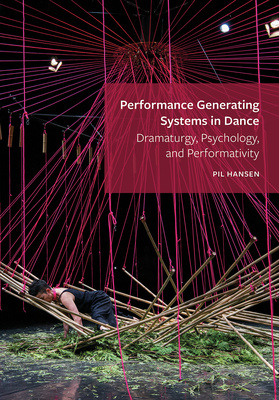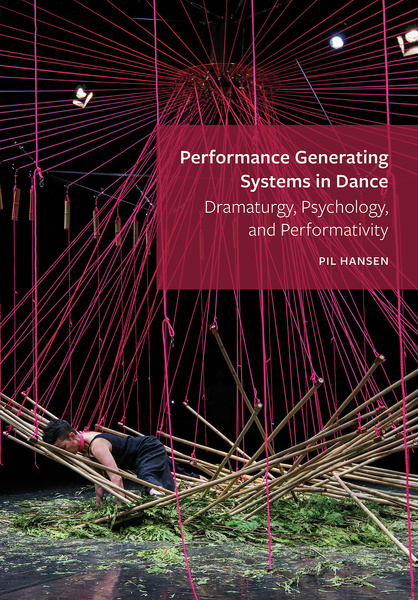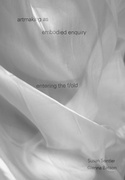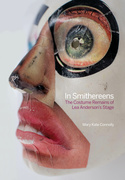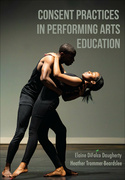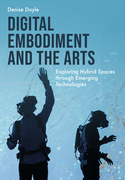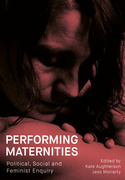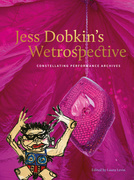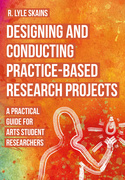Performance Generating Systems in Dance (Book)
Dramaturgy, Psychology, and Performativity
Analyzes the self-organizing dramaturgies of dance works that generate performance systematically. Provides effective resources for those who wish to study or realize the potential of performance generating systems in dance within the fields of choreography and dance dramaturgy, dance education, community dance, or dance psychology. 17 b&w illus.
A PDF version of the introduction of this book is available for free in Open Access: Performance Generating Systems in Dance. It has been made available under a Creative Commons Attribution 4.0 International Public license.
Edition
Performance generating systems are systematic and task-based dramaturgies that generate performance for or with an audience. In dance, such systems differ in ways that matter from more closed choreographed scores and more open forms of structured improvisation. Dancers performing within these systems draw on predefined and limited sources while working on specific tasks within constraining rules. The generating components of the systems provide boundaries that enable the performance to self-organize into iteratively shifting patterns instead of becoming repetitive or chaotic.
This book identifies the generating components and dynamics of these works and the kinds of dramaturgical agency they enable. It explains how the systems of these creations affect the perception, cognition and learning of dancers and why that is a central part of how they work. It also examines how the combined dramaturgical and psychological effects of the systems performatively address individual and social conditions of trauma that otherwise tend to remain unchangeable and negatively impact the human capacity to learn, relate and adapt. The book provides analytical frameworks and practical insights for those who wish to study or apply performance generating systems in dance within the fields of choreography and dance dramaturgy, dance education, community dance or dance psychology.
Featured cases offer unique insight into systems created by Deborah Hay and Christopher House, William Forsythe, Ame Henderson, Karen Kaeja and Lee Su-Feh.
Dr. Pil Hansen is professor of the performing arts at the University of Calgary in Canada, President of Performance Studies international, general editor of the Expanded Dramaturgy book series (Routledge), a founding member of Vertical City Performance, and a dance/inter-arts dramaturg. Her empirical and PaR experiments examine cognitive dynamics of memory and learning, and social dynamics of connection, in creative processes. Hansen has dramaturged more than thirty works in Scandinavia and North America and authored or edited over forty publications. Her latest co-edited books are Dance Dramaturgy: Modes of Agency, Awareness and Engagement (2015) and Performing the Remembered Present: The Cognition of Memory in Dance, Theatre and Music (2017).
Acknowledgements
List of Figures
1. Introduction: Performance Generating Systems in Dance
- Conceptualizing and researching performance generating systems
- Three analytical and dramaturgical frameworks in application
- Dramaturgy
- Psychology
- Performativity
PART ONE: DRAMATURGY
2. The Dramaturgical Agency of Performance Generating Systems
- Developments in dramaturgical agency
- Departures from choreography
- Differences from improvisation
- Concepts of memory at work
- Memory and agency in performance generating systems
3. Analyzing and Notating Performance Generating Dramaturgies as Dynamical Systems
- Notation challenges
- Dynamical Systems Theory
- DST-based tools of analysis and notation
4. Recycled Choreographic Memory in relay: Henderson
- Futuring memory
- The dynamics of futuring memory
- Ethics of affecting memory
PART TWO: PSYCHOLOGY
5. The Cognitive Demands and Learning Effects of Performance Generating Systems
- The emergence of dance psychology
- Notes on methodology
- An earned presence
- Kinaesthetic perception and perceptual integration
- Recalling and perceiving through memory
- Constraints and distributed, extended cognition
- Implicit and explicit learning
- Disrupting and manipulating implicit processes
- Unlearning and recalibrating perception
6. Learning in Whole in the Head: Forsythe
- Improvisation Technologies: imaging movement modalities
- Building an ensemble: collective memory and skill development
- Opening the near closed ‘soft clock’
- Generating components within narrow boundaries
- Self-organizing dynamics and the attractor of emergent performer agency - Closing the near open ‘supernova’
- Expanded generating components and exploded boundaries
- The self-organizing attractor of ensemble memory and agency - Learning WitH an ensemble
7. Unlearning in I’ll Crane for You: Hay through House
- Testing the boundaries of performance generating systems with Hay through House
- Generating components
- Practice
- Adapting performer
- Score
- Agreement
- Transferability - Learning to unlearn
PART THREE: PERFORMATIVITY
8. Affecting the (Im)possibility of Change: Performativity and Trauma
- Moving from dramaturgy and psychology through performativity
- Performativity: discursive
- Performativity: posthuman
- Potential of change in performance generating systems: phase transitions
- (Un)changeable conditions: trauma
- Performative Agency
9. Transition from Dissociation to Intimacy in Crave: Kaeja
- Craving touch: sourcing dissociation
- Creating ‘touch’
- Safety through transfer
- Phase transition towards relational, performative agency
- Process strategies
10. Environmental Entanglement in the Dance Machine: Lee
- Querying belonging: sourcing displacement
- A simple dance: devising a consensual feedback system
- Generating components and phase transition: listening to collective/environmental interaction
- Transitions from hesitant/unconnected performance to engagement
- Immersive rest and robust forms of creative engagement
- Invited forms of collaborative engagement - Performative strategies
11. Conclusion: Affecting Agency, Learning, and Change through Performance Generating Systems
- The conceptualization of performance generating systems
- Dramaturgical, psychological, and performative case insights
- The combined theoretical frameworks and their future application
Appendix: Methodological Negotiations
Bibliography
Index
'Going beyond the typical theoretical constructs of choreography and improvisation, Pil Hansen’s book indulges in the inventive components of creating dance productions utilizing performance generating systems. What could be overly abstract is grounded in concrete definitions that guide the reader toward an understanding of the included theories and possible applications.[...] This text is well suited for a graduate-level dance studies seminar involving practical application of creation methods [...] In addition to graduate study, Hansen’s book is a wonderful source of thoughtful queries, ideas, and experiential knowledge that would benefit any dance educator guiding students in maintaining and deepening curiosity and explorative actions.'

